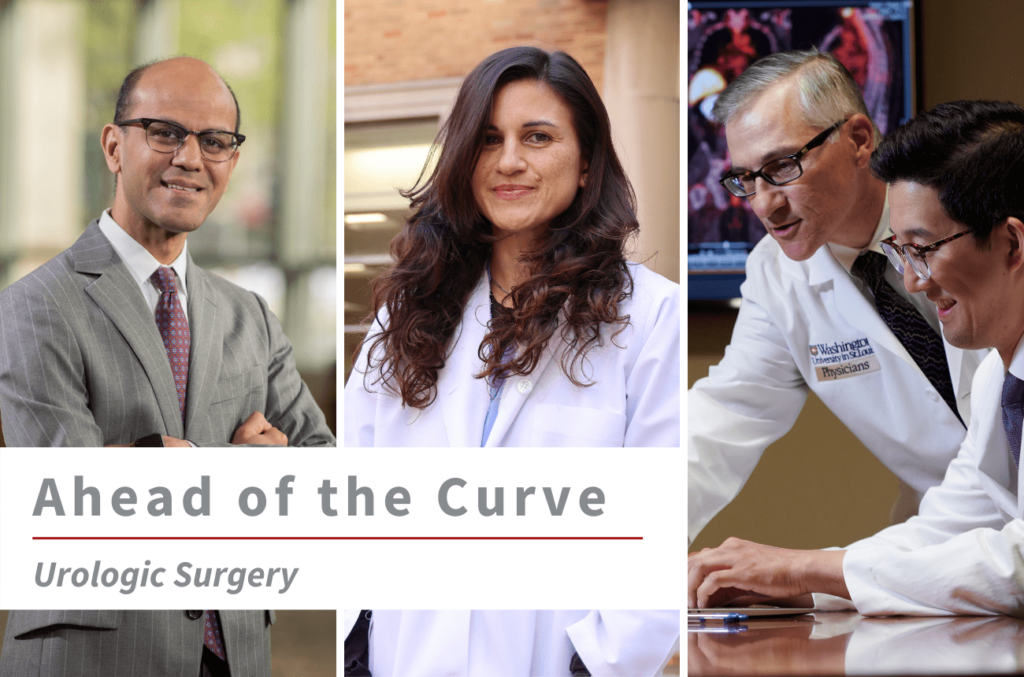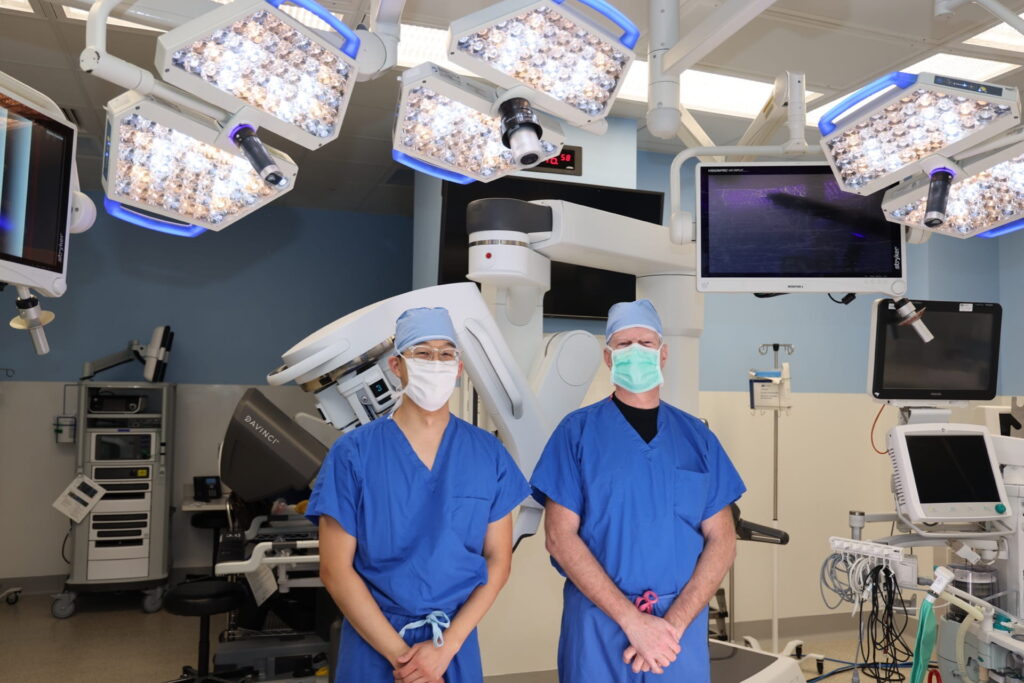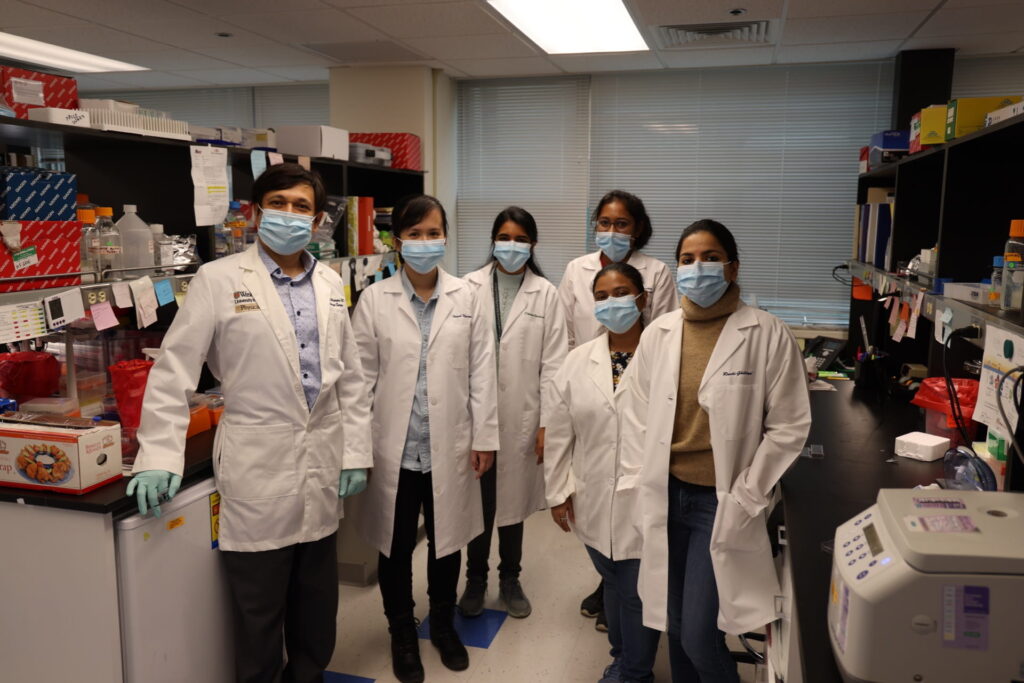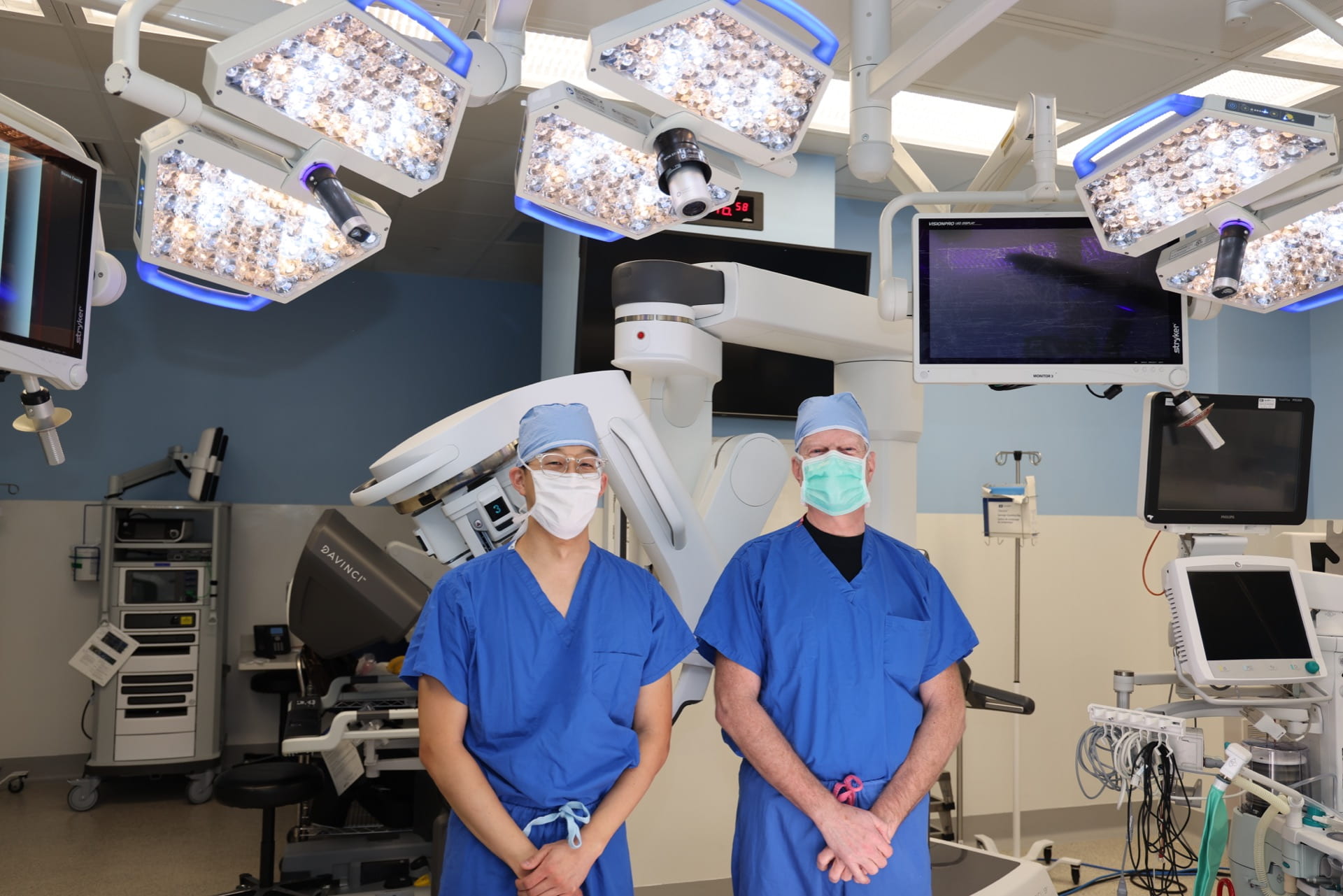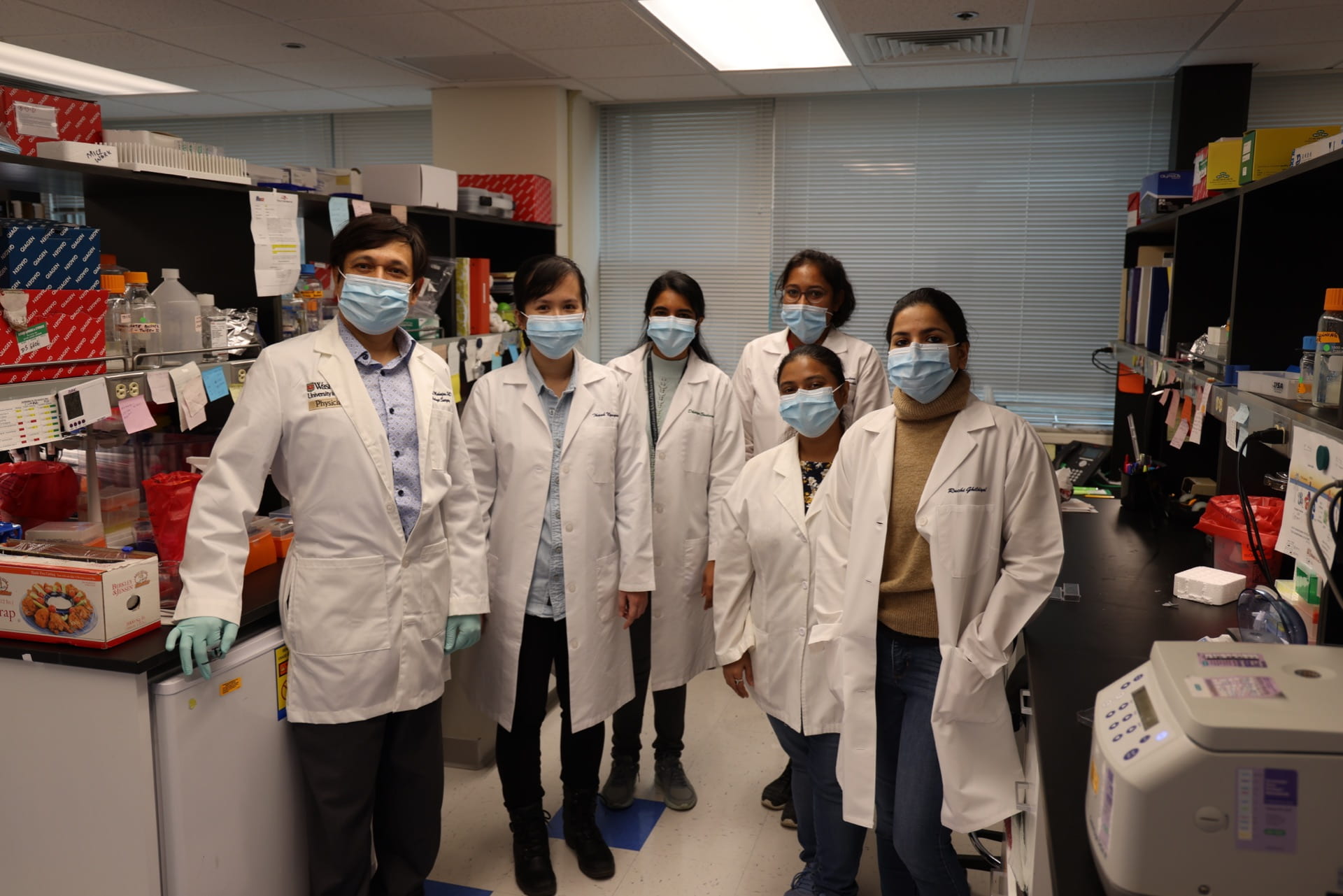Faculty in this division are leaders in reconstructive and robotic urology and operative techniques. Urologists offer a range of treatment options, both surgical and nonsurgical, for medical conditions of the urogenital tract. The division is nationally recognized for its research on detecting and determining the level of risk of prostate cancer. Urologists are leaders in minimally invasive surgical techniques. The residency program trains outstanding physicians through the expertise of fellowship-trained faculty, high volume, diversity of cases and spirit of inquiry.
Division of Urologic Surgery | 2020 Annual Report
To improve the detection and treatment of prostate cancer, the Division of Urology has developed a comprehensive program of research and clinical innovation. The division is employing new, targeted approaches to imaging, ablation and surgical care of prostate cancer.
Gerald Andriole, MD, Division Chief of Urologic Surgery, is leading the offensive against high-risk, advanced, recurrent and metastatic prostate cancer through the use of ExactVu micro-ultrasound imaging. This form of high-frequency imaging operates at 29 megahertz (MHz). When compared to the conventional ultrasound probe, which is closer to 7 MHz, ExactVu allows for more detailed imaging and a precise, targeted biopsy of a man’s prostate.
“With this technology, we can advance the needle to the edge of what we see as abnormal. The biopsy core will go right through the most worrisome part of the prostate,” says Andriole, the Robert K. Royce Distinguished Professor of Urologic Surgery. Andriole is an internationally known expert on prostate cancer whose innovations in screening and clinical care have improved the lives of countless patients. He is the recipient of a 2020 Distinguished Clinician Award from the School of Medicine.
This precise, targeted approach allows urologists to identify the exact location of the cancer in a man’s prostate. In some cases, the localized cancer can be destroyed without radiation or surgical removal of the prostate. Through focal ablation, physicians target the cancerous portion of the prostate with cryoablation, laser treatment and other techniques.
For patients whose cancer requires surgery, the division is a leader in minimally-invasive approaches. Urologists Eric Kim, MD, and R. Sherburne Figenshau, MD, are at the forefront of robotic surgical treatment of urologic cancers. Kim and Figenshau utilize the Single Port (SP) Surgical System to perform minimally-invasive urologic surgery, targeting the same anatomy as other procedures, but with faster recovery times and fewer complications than traditional open surgery.
“After SP robotic prostatectomy, some patients are able to go home on the same day as surgery,” Kim says. “We have also shown that SP robotic cystectomy is equivalent to conventional multi-port robotic cystectomy.”
This year, Boston Scientific recognized Christopher Arett, MD, MBA, for his clinical volume and patient outcomes using GreenLight laser therapy to treat benign prostatic hyperplasia. This recognition makes Barnes-Jewish Hospital and the School of Medicine one of only 11 Centers of Excellence in the country and the only center in the region.
Urologists in the division are leading the offensive against the most threatening forms of prostate cancer through targeted approaches to screening, detection and treatment.
2020 Highlights
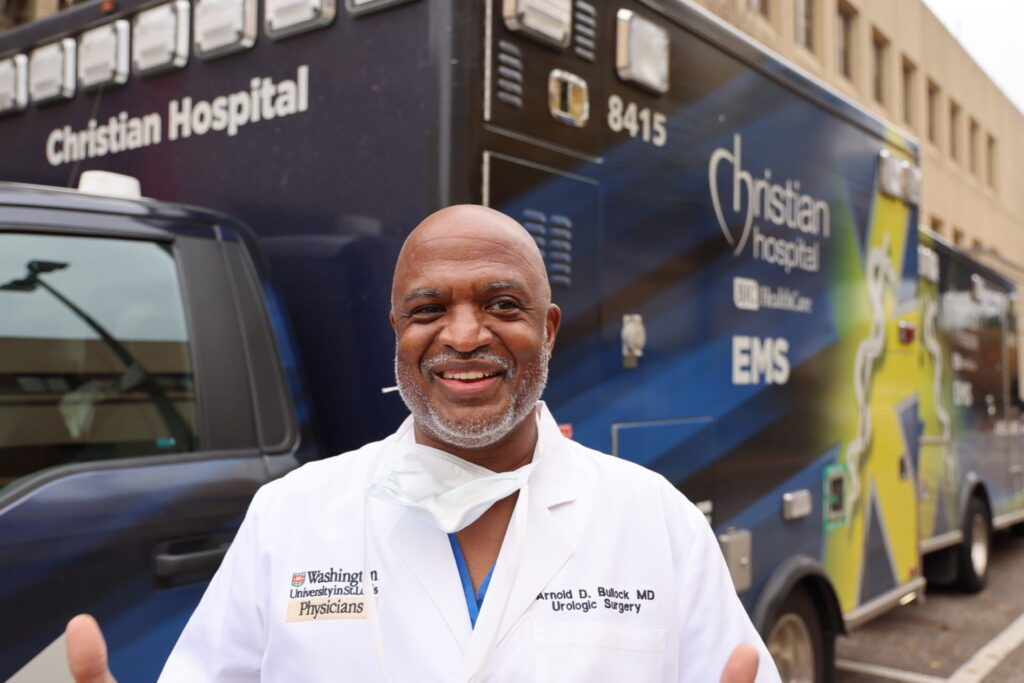
CLINICAL
Arnold Bullock, MD, is a leader in the treatment of men’s health conditions at Christian Hospital. In 2019, Christian Hospital recognized Bullock as a Physician of the Year for his compassion, commitment and expert knowledge in innovative technologies and therapies. Bullock extends his practice beyond the clinic by visiting local churches and community partners in North St. Louis. Working with Siteman Cancer Center’s Program for the Elimination of Cancer Disparities (PECaD), Bullock educates the public on the importance of cancer screening. “PECaD addresses the needs of a medically underserved population,” Bullock says. “Studies have shown the importance of grassroots efforts and community participation in reducing cancer disparities.”
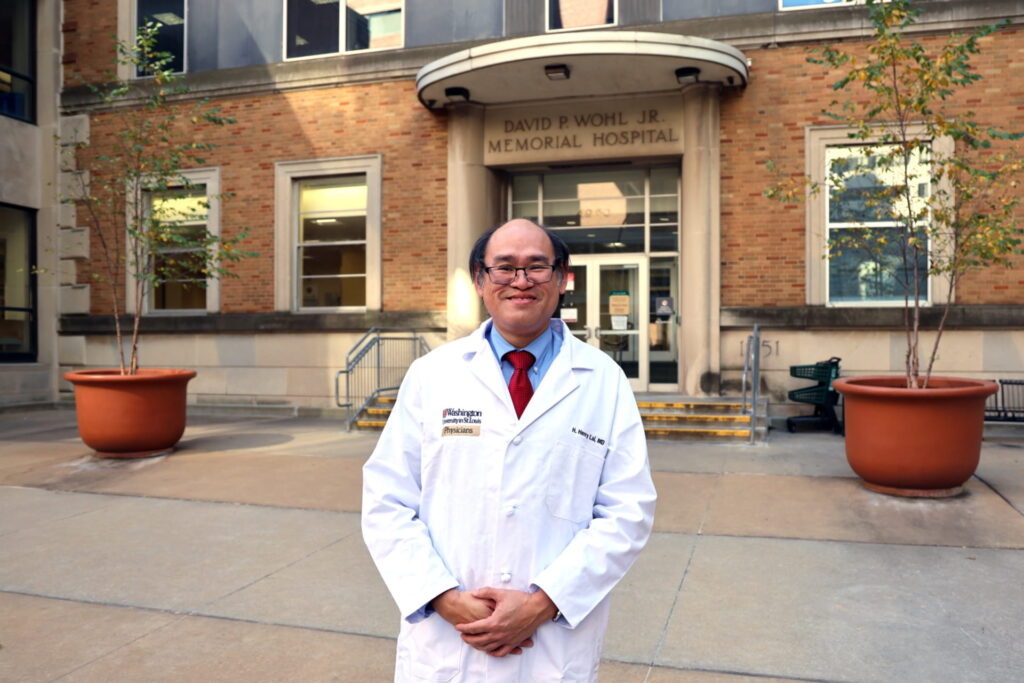
RESEARCH
The Division of Urology is the highest recruiting site for the Prevention of Urinary Stones with Hydration (PUSH) study. Funded by the National Institutes of Health and National Institute of Diabetes and Digestive and Kidney Diseases, the PUSH study is a randomized clinical trial of kidney stone patients to determine whether behavioral interventions, including drinking more fluids, will help prevent stone disease progression over a two-year period. Principal investigators Alana Desai, MD, and Henry Lai, MD, aim to provide further evidence that drinking more fluids can reduce the risk of kidney stones, and investigate novel ways to encourage, motivate and support people to achieve their fluid intake goals.
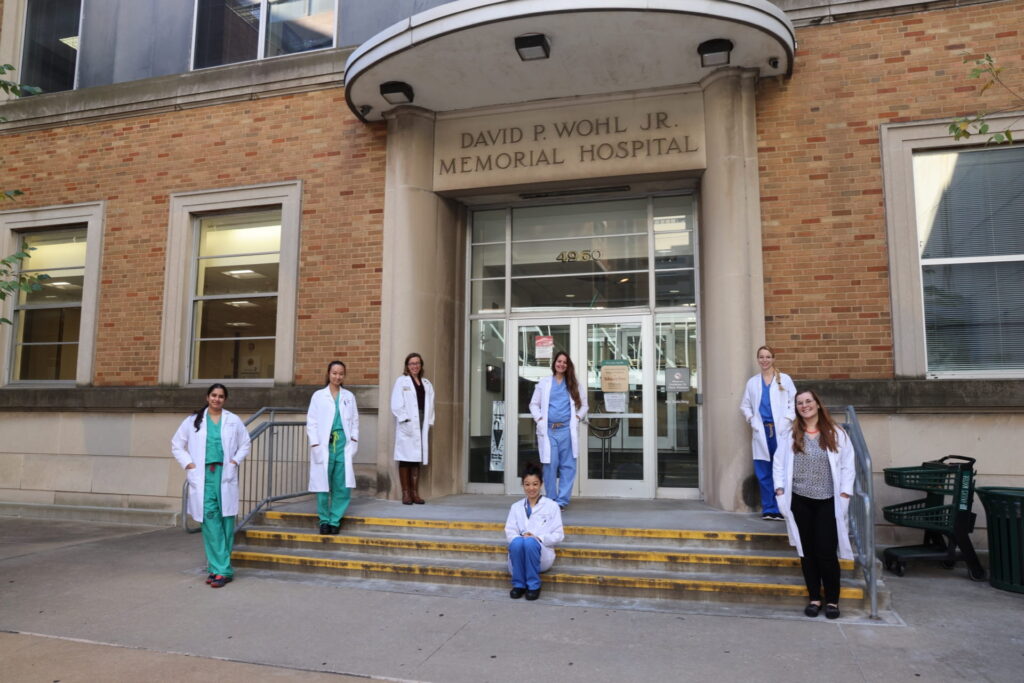
EDUCATION
Program Director Erica Traxel, MD, endorses increasing diversity in the urology residency program. The 2019 American Urological Association Census showed that only 5.9% of practicing urologists are underrepresented minorities (URM) and 9.9% are women. Of the residency program’s 18 current residents, three are URM and seven are women. Recent efforts to recruit more diverse residents include offering a scholarship to sponsor URM medical students who visit for a sub-internship. “We are excited by the richness that we know diversity will add to our program and our community,” says Traxel, who was recently selected as a fellow in the Washington University School of Medicine Academy of Educators.
Division of Urology researchers Kiran Mahajan, PhD, and Nupam Mahajan, PhD, identify genetic mutations that increase a man’s risk of developing advanced, recurrent or metastatic prostate cancer, and study therapies to block prostate tumor growth.
Principal Investigator Kiran Mahajan leads research into the mutation of a specific gene, called HOXB13. This gene is thought to play a role in the development and maintenance of skin, as well as acting as a tumor suppressor. A HOXB13 mutation can impair the gene’s ability to suppress tumors. Kiran Mahajan’s laboratory is developing treatment plans to address this genetic abnormality by targeting HOXB13-effectors. This research is funded by Phi Beta Psi Sorority, the National Institutes of Health and the Prostate Cancer Foundation.
In men with prostate cancer that keeps growing, even when the amount of testosterone in the body is greatly reduced, the tumor depends on HOXB13 and an enzyme called ACK1 to continue growing.
Nupam Mahajan, Principal Investigator and Director of Urological Research at the School
of Medicine, is researching a novel ACK1 small molecule inhibitor. Nupam Mahajan’s laboratory has developed a compound that inhibits the ACK1 enzyme and suppresses the growth of prostate cancer cells—especially those in men whose cancer continues to grow after testosterone is reduced.
Kiran and Nupam Mahajan continue to lead innovative research in prostate cancer through publications and patents. Their research teams have identified a heat shock protein called
HSPB8 as important in predicting high-risk prostate cancer. HSPB8 expression is blocked by the HOXB13 mutation in prostate cancer. Kiran Mahajan hypothesizes that HSPB8 is a cellular defense mechanism against cancer. Her laboratory is studying whether HSPB8 levels can be used as a reliable prostate cancer biomarker by analyzing HSPB8 expression in a large number of clinical specimens. These pre-clinical studies will be important to demonstrate reversal of HSPB8 loss as a new therapeutic opportunity in prostate cancer.
